Nationality Finnish Known for Painting | Education Academie Colarossi Name Helene Schjerfbeck | |
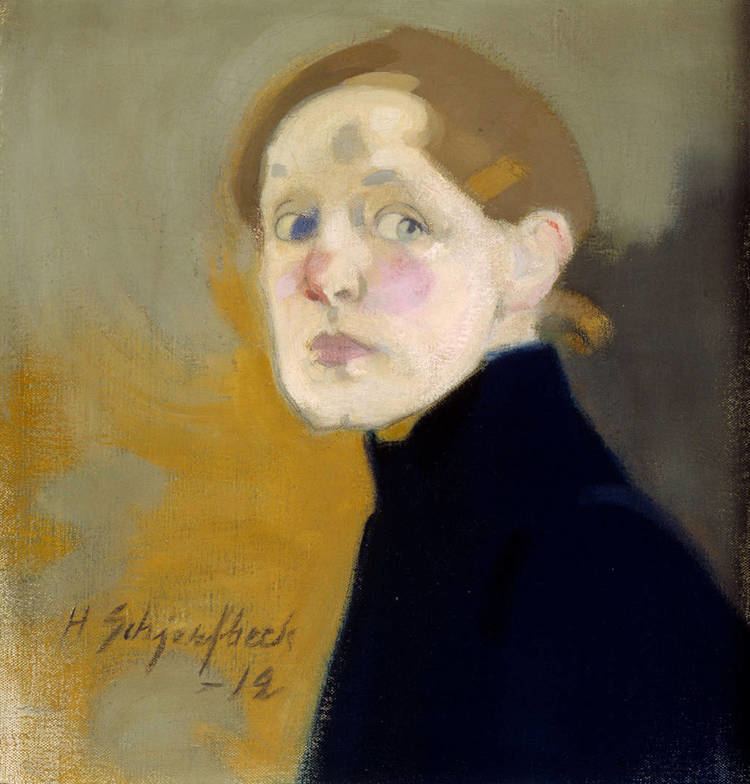 | ||
Full Name Helena Sofia Schjerfbeck Born 10 July 1862 ( 1862-07-10 ) Helsinki, Grand Duchy of Finland Movement Naturalism (arts), Realism and Expressionism Died January 23, 1946, Stockholm, Sweden Artwork The Convalescent, Girl reading, Dancing Shoes Similar People Johan Ludvig Runeberg, Leevi Madetoja, Fredrik Pacius, Toivo Kuula, Armas Jarnefelt | ||
Periods Expressionism, Naturalism | ||
Helene schjerfbeck wmv
Helene Schjerfbeck (July 10, 1862 – January 23, 1946, pronounced [he'le:n 'ɧærvbek] in Standard Swedish and [helɛ:n ʃærvbek] in Finland Swedish) was a Finnish painter. She is most widely known for her realist works and self-portraits, and less well known for her landscapes and still lifes. Throughout her long life, her work changed dramatically.
Contents
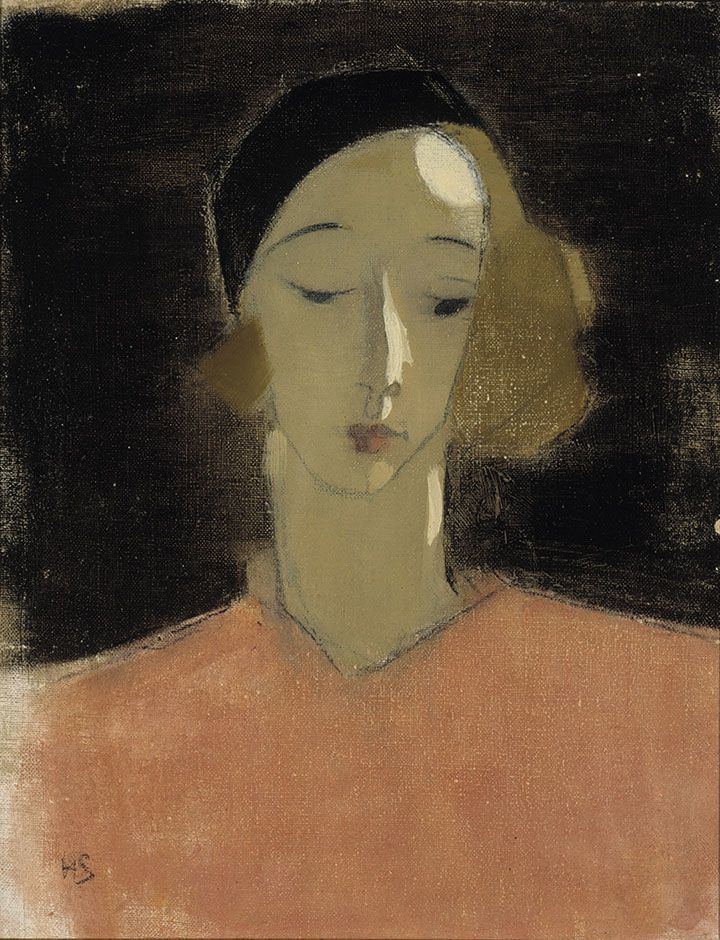
Her work starts with a dazzlingly skilled, somewhat melancholic version of late-19th-century academic realism…it ends with distilled, nearly abstract images in which pure paint and cryptic description are held in perfect balance. (Roberta Smith, New York Times, November 27th 1992)
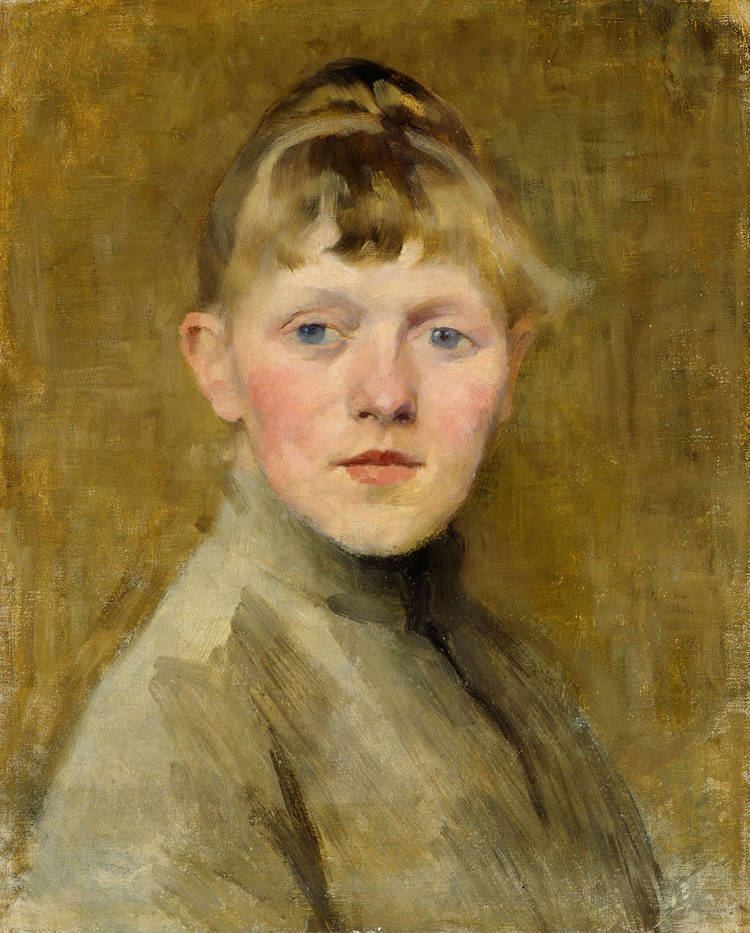
Helene schjerfbeck
Early life

Helena Sofia Schjerfbeck was born on July 10, 1862, in Helsinki, Finland (then an autonomous Grand-Duchy within the Russian Empire), to Svante Schjerfbeck (an office manager) and Olga Johanna (née Printz). When she was four she suffered a hip injury, which prevented her from attending school. She showed talent at an early age, and by the time she was eleven she was enrolled at the Finnish Art Society Drawing School, where her fees were paid by Adolf von Becker, who saw promise in her [ref. Ahtola-Moorhouse]. At this School Schjerfbeck met Helena Westermarck.
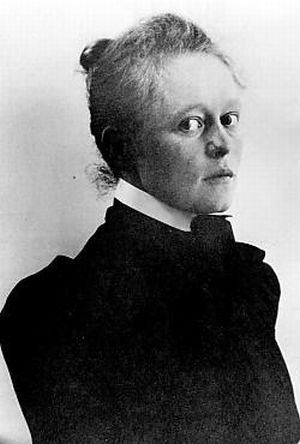
When Schjerfbeck’s father died of tuberculosis on February 2, 1876, Schjerfbeck’s mother took in boarders so that they could get by. A little over a year after her father’s death, Schjerfbeck graduated from the Finnish Art Society drawing school. She continued her education, with Westermarck, at a private academy run by Adolf von Becker, which utilised the University of Helsinki drawing studio. Professor G. Asp paid for her tuition to Becker’s private academy. There, Becker himself taught her French oil painting techniques.
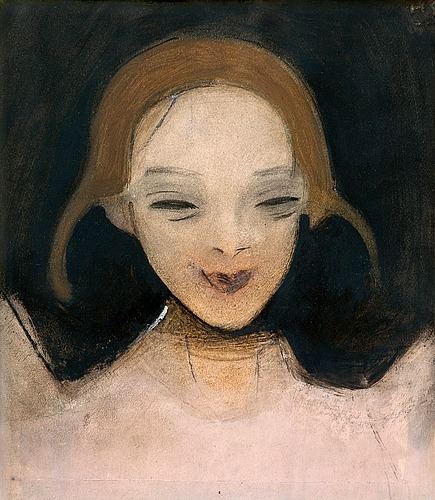
In 1879, at the age of 17, Schjerfbeck won third prize in a competition organised by the Finnish Art Society, and in 1880 her work was displayed in an annual Finnish Art Society exhibition. That summer Schjerfbeck spent time at a manor owned by her aunt on her mother’s side, Selma Printz, and Selma’s husband Thomas Adlercreutz. There she spent time drawing and painting her cousins. Schjerfbeck became particularly close to her cousin Selma Adlercreutz, who was her age. She set off to Paris later that year after receiving a travel grant from the Imperial Russian Senate.
Career
In Paris, Schjerfbeck painted with Helena Westermarck, then left to study with Léon Bonnat at Mme Trélat de Vigny’s studio. In 1881 she moved to the Académie Colarossi, where she studied once again with Westermarck. The Imperial Senate gave her another scholarship, which she used to spend a couple of months in Meudon, and then a few more months in Concarneau, Brittany. She then went back to the Académie Colarossi briefly, before returning to the Adlercreutz family manor in Finland. Schjerfbeck continued to move around frequently, painting and studying with various people. Schjerfbeck made money by continuing to put her paintings in the Art Society’s exhibitions, and she also did illustrations for books. In 1884 she was back in Paris at the Académie Colarossi with Westermarck, but this time they were working there. She was given more money to travel by a man from the Finnish Art Society and in 1887 she traveled to St Ives, Cornwall, in Britain. There she painted The Convalescent, which won the bronze medal at the 1889 Paris World Fair. The painting was later bought by the Finnish Art Society. At this period Schjerfbeck was painting in a naturalistic plein-air style.
In the 1890s Schjerfbeck started teaching regularly in Finland at the Art Society drawing school, but in 1901 she became too ill to teach and in 1902 she resigned her post. She moved to Hyvinkää, all while taking care of her mother who lived with her (the mother died in 1923). While living in Hyvinkää, she continued to paint and exhibit. "Schjerfbeck’s sole contact with the art world was through magazines sent by friends." Since she did not have art, Schjerfbeck took up hobbies like reading and embroidery.
During this time Schjerbeck produced still lifes and landscapes, as well as portraits, such as that of her mother, local school girls and women workers, and also self-portraits, and she became a modernist painter. Her work has been compared to that of artists such as James McNeill Whistler and Edvard Munch, but from 1905 her paintings took on a character that was hers alone. She continued experimenting with various techniques such as using different types of underpainting.
In 1913 Schjerfbeck met the art-dealer, Gösta Stenman, with whose encouragement she exhibited at Malmo in 1914, Stockholm in 1916 and St Petersburg in 1917. In 1917 Stenman organised her first solo exhibition; and in that year Einar Reuter (alias H. Ahtela) published the first Schjerfbeck monograph. Later she exhibited at Copenhagen (1919), Gothenburg (1923) and Stockholm (1934). In 1937 Stenman organised another solo exhibition for her in Stockholm, and in 1938 he began paying her a monthly salary.
Later years and death
As the years passed, Schjerfbeck travelled less. When a family matter arose, such as a death, she would travel back to her home city of Helsinki and she spent most of 1920 in Ekenäs, but by 1921 she was back living in Hyvinkää.
For about a year, Schjerfbeck moved to a farm in Tenala to get away from the Winter War, but went back to Ekenäs in the middle of 1940. She later moved into a nursing home, where she resided for less than a year before moving to the Luontola sanatorium. In 1944 she moved into the Saltsjöbaden spa hotel in Sweden, where she lived until her death on January 23, 1946. She continued to paint actively even during her last years; the famous series of self-portraits was painted in Saltsjöbaden.
Work
Dancing Shoes is one of Schjerfbeck's most enduringly popular paintings. The subject was so popular that Schjerfbeck returned to the theme three times as well as executing a lithograph of it, the latter catapulting the painting to international fame. It depicts her cousin Esther Lupander. Esther had extremely long legs and for that reason the painting was nicknamed "The Grasshopper". Executed in Realist style, the painting shows the clear influence of Schjerfbeck's stay in Paris where she had expressed admiration for Edouard Manet, Edgar Degas, Berthe Morisot, and Mary Cassatt. It fetched £3,044,500 at a 2008 Sotheby's London sale.
Girl with Blonde Hair is an example of Schjerfbeck's mature style, drawing on French Modernism. The work belongs to a series including also The Family Heirloom of the same year featuring neighbors of Schjerfbeck, Jenny and Impi Tamlander, who ran errands for Schjerfbeck and her mother and helped look after the family home. Here the sitter is Impi. The painting realized £869,000 at a 2015 Sotheby's London sale.
